Diverse Field of Stars Shines Over Tech
B+C’s 2021 Technology Leadership Award winners reflect a wide range of industry innovations

This year’s Technology Leadership Award honorees, selected by the editors of Broadcasting+Cable, have some of the most diverse résumés in the history of these awards, with careers in broadcast TV, cable, streaming, theatrical film production, research, venture capital and public media.
For some, their work involves fundamental, cutting-edge research or the development of standards that are bringing new technologies to market. Others are using newer technologies like data analytics, cloud-based infrastructures or artificial intelligence to help traditional TV companies build new infrastructures for new digital and streaming businesses. Many of them have also pursued careers in more traditional media, where they’ve used their technological skills in broadcasting or content production in innovative ways that helped develop new consumer experiences and better video content.
Taken together, the honorees’ stories offer a snapshot of a technological revolution that is transforming virtually every aspect of the television industry.
Many of them will speak about that tech revolution at this year’s Technology Leadership Series, from March 23-26. For more on the agendas and sessions, go to technologyleadershipsummit.com.
Greig Fraser, Director of Photography/Producer, Disney Plus
One big reason why Greig Fraser is getting a Technology Leadership Award can be seen by simply firing up the Disney Plus app and watching The Mandalorian.
Star Wars fans have come to expect lavish special effects that transport audiences all over the universe, but creating the beautiful otherworldly landscapes found in blockbuster movies presents a serious challenge for a television series like The Mandalorian, which must be produced on a much more limited budget.
Working with teams at Industrial Light & Magic, the visual-effects company that creates the stunning imagery for the Star Wars franchise, Fraser came up with a much less costly solution to the problem, a new production system dubbed “The Volume.”
The smarter way to stay on top of broadcasting and cable industry. Sign up below

The idea originated in 2015 during the production of theatrical film Rogue One: A Star Wars Story. That film used a large LED (light-emitting diode) wall, which could display different backgrounds. to shoot a number of scenes.
By the time shooting started on season one of The Mandalorian in 2018, improvements in LED walls, processing power and upgrades to Epic Games’s Unreal Engine 4 allowed producers to use a similar system to create spectacular visuals without leaving a Los Angeles warehouse.
“We could create a background on the wall with the 3D gaming engine that a camera could shoot, and create realistic images,” Fraser explained. “It means you never have to build a set again. You just project it on a wall and it becomes real.”
The effort earned Fraser and Baz Idoine a Primetime Emmy Award for Outstanding Cinematography for a Single-Camera Series (Half-Hour) in 2020. But Fraser believes the potential goes far beyond beautiful images in The Mandalorian and science-fiction projects that rely heavily on special effects. “It started in science fiction and Star Wars, but I think it will become a mainstream drama based solution,” Fraser said.
The Volume also cuts costs and simplifies the production process, which is often limited by weather, available light, logistics and other factors, he said. That means producers can pay more attention to storytelling, as opposed
to trying to quickly shoot a scene during the beautiful but fleeting dawn or dusk light.
“I think it is a milestone, a turning point in filmmaking that will allow directors to come up with innovative ways to tell stories,” he said.
Fraser’s work with ILM to create The Volume is the most recent highlight from an award-winning career as a director of photography, producer and cinematographer. He has worked on dozens of films, including Zero Dark Thirty, Lion, Rogue One and such upcoming films as The Batman, where The Volume will be used.
Throughout his career, Fraser has always tried to use technology in ways that would help directors tell better stories.
“Everyone thinks that filmmaking always involves the perfect scenario,” Fraser said. “The sky is always blue and everything is perfect. But the reality is very different. Nature is very beautiful, but it can also be cruel. So my goal for filmmaking is to remove as many of the hindrances to filmmaking as possible so that technology helps, not hinders, the director.”
William T. Hayes, Director of Engineering & Technology, Iowa Public Television
Like many Technology Leadership Award winners over the years, William Hayes got an early start in broadcasting, building an AM radio station at his high school with a few classmates. “We played music during lunch hour but the reality of it was that we wanted to be DJs, so we built a radio station to do that,” he said.
Hayes pursued his dream of being a disc jockey while attending Loyola Marymount University in Los Angeles, where his tech skills helped him to get work fixing things and as a DJ at the college radio station.
“But I soon found that jocks get fired a lot,” Hayes recalled with a laugh. So, in the late 1970s, he decided to follow the advice of a colleague who praised his tech skills.
“He said I ought to become an engineer,” he said. “You still get to work in a fun business but you don’t get fired anywhere as much.”
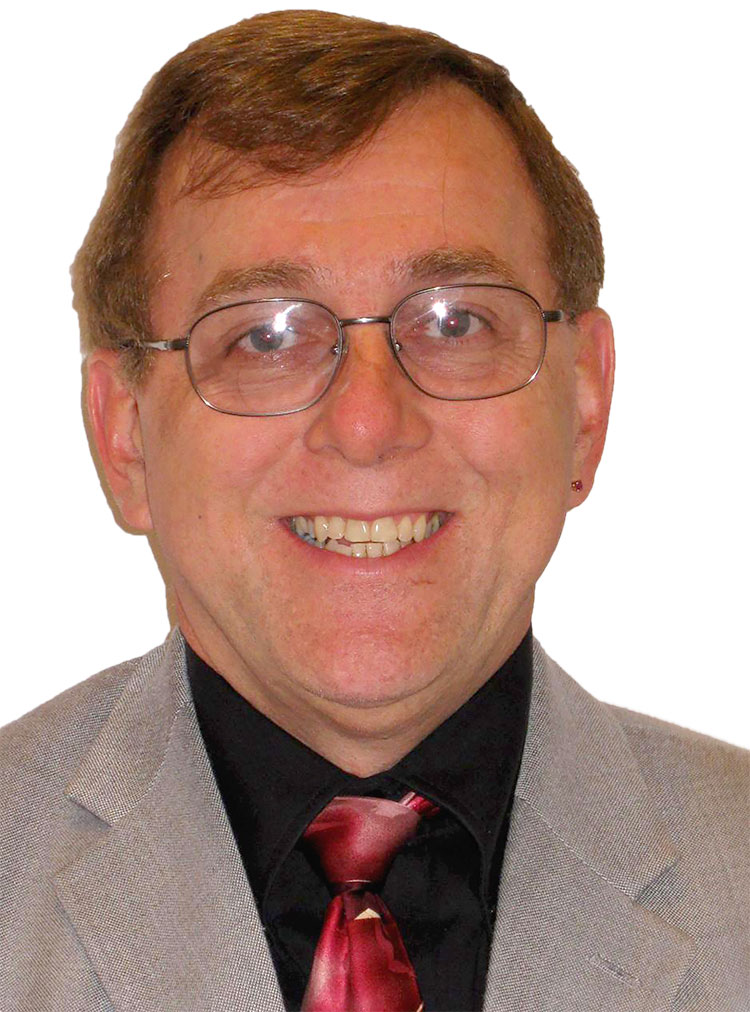
Hayes made the switch to TV when he was hired in 1982 by Mauna Kea Broadcasting to construct the first full-powered UHF TV station in the Hawaiian islands. From there, he went on to a successful career in commercial broadcasting in the 1980s and 1990s, holding the top engineering jobs at a number of stations before taking his current job at Iowa PBS in 1999.
At the nine-station Iowa PBS network, Hayes and his tech teams have been involved in a number of innovative projects. These include: a major digital TV transition with nine transmitter sites; acting as the host of an annual summit on the DTV transition; launching an all-HD facility in 2007, when many stations were still standard-definition; and, most recently, overseeing an innovative approach to installing a new automation system during a pandemic lockdown.
Much of this illustrates the kind of innovation often found at public broadcasters that operate on limited budgets. “We don’t have a lot of money, but people are very mission-driven and good at finding ways to think outside the box to get things done,” he said.
Hayes’s career also illustrates the kind of industry-wide collaboration that has characterized many Technology Leadership Award winners. Early in his career, Hayes saw the virtues of collaboration when he got help building his first TV station in Hawaii from colleagues like Doug Lung, another 2021 Technology Leadership Award winner, and the Harold Ennis books he’d gotten from the Society of Broadcast Engineers (SBE).
Following that experience, he began to work closely with a number of major organizations, including the SBE; the IEEE Broadcast Technology Society, where he is a past president; and the Society of Motion Pictures and Television Engineers (SMPTE).
Cindy Hutter Cavell, VP, Cavell, Mertz and Associates
Early in her career, in 1981, Cindy Hutter Cavell remembers getting a call from her boss at ABC News telling her that she needed to be at Kennedy Airport the next afternoon, because they were flying her to Kathmandu, Nepal, where she would be building a series of microwave transmitters that ABC and Canada’s CBC would use to air the climbing of Mount Everest.
That kind of engineering work, to capture amazing images from all over the world, highlights the kind of innovation that broadcast engineers have displayed for decades. It’s also an early example of the innovative work that has earned Hutter Cavell a place in the 2021 class of Technology Leadership Award winners.
Hutter Cavell got an early start in technology, learning how to solder at the age of 10 and hosting a daily classical music program at her high-school radio station.
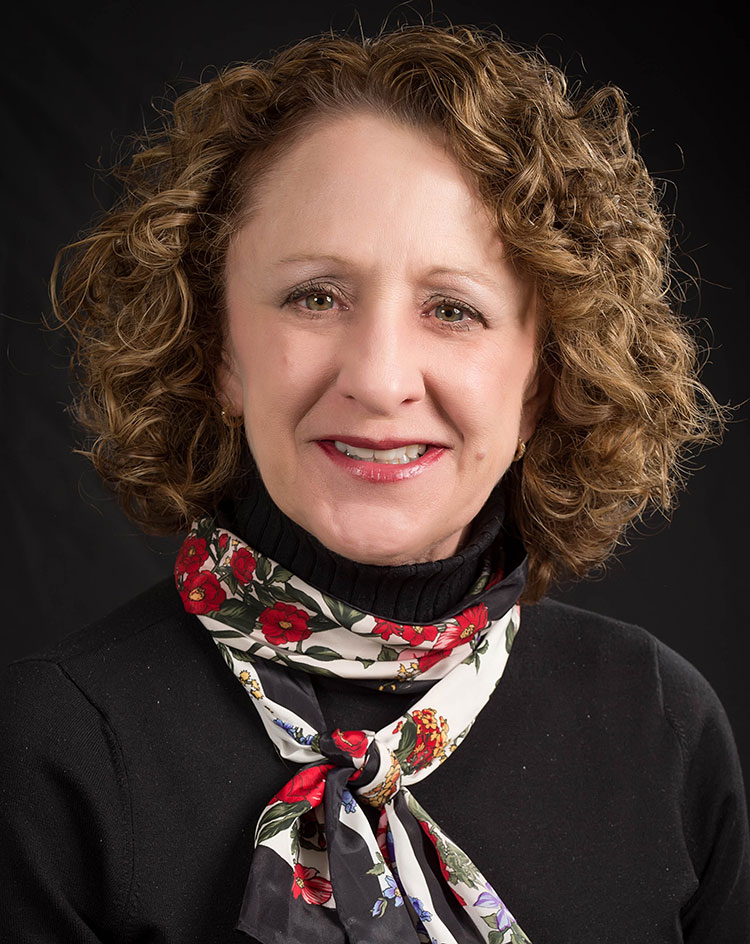
After getting a journalism degree at the University of Kansas in 1977, she went to work in local TV before joining ABC News. Besides her adventures at Everest, her 15-year stint at ABC News saw her working on numerous presidential trips, three Olympics and Operation Desert Storm, where she was the on-site technical manager in Riyadh, Saudi Arabia, for U.S. Army Gen. Norman Schwarzkopf’s briefings in 1991.
In 1993, Hutter Cavell returned to local broadcast, heading up engineering at a number of different stations being acquired by Argyle Television. As one of very few women to head a local station’s engineering staff, she did innovative work rebuilding a number of facilities, but her proudest memories come from training and working with local engineers. “I wanted to return to local TV because I wanted to grow operations and grow people,” she recalled.
After overseeing a digital upgrade at a Fox Sports Net facility in Houston and then working for Digital Systems Technology, she was hired in 2004 by Sprint Nextel as director of engineering to oversee the $700 million 2-GHz relocation. This work had an important long-term impact on the industry because it allowed stations to move to newer digital microwaves and laid the groundwork for moving to IP microwave.
She then joined Cavell, Mertz and has since been involved in a number of innovative projects, including building a series of microwave transmitters capable of transporting data from Chicago to New York faster than a fiber-optic network. Cindy and her husband, Garrison Cavell, have also been very active in working with the National Association of Broadcasters to train the next generation of engineers.
“Media companies are complaining that they can’t find engineers,” Hutter Cavell said.
“My response is to say, ‘You need to put your money where your mouth is.’ If you have a chief engineer who is over 60, you had better start now training someone for that role.”
Brett Jenkins, Executive VP/Chief Technology Officer, Nexstar Media Group
When Brett Jenkins earned his bachelor of science in electrical engineering at the University of Massachusetts in 1992, he remembers becoming fascinated with digital broadcasting and taking a job at Comark, a manufacturer of transmission technologies.
“I thought digital broadcasting was the coolest thing ever,” Jenkins recalled. “It was television and it was digital and we could do things with digital technologies you couldn’t do before.”
One of his first tasks at Comark was working on digital modulators and getting digital broadcasts to work, which led to a series of jobs at vendors that were developing cutting-edge technologies for digital broadcasting, including Thales and Thomson. Jenkins was the lead U.S. engineer in a global team developing digital adaptive pre-correction technology that earned Thales a technical Emmy in 2003.
After getting an MBA in 2005 from the Questrom School of Business at Boston University, Jenkins moved to the broadcasting side of the business, taking a job with Ion Media in 2007 as director of technology strategy. “I wanted to move from not just developing technology to working at broadcasters on ways to connect technology to the business success of broadcasting,” he said. “That is still really my passion today.”
Jenkins was promoted to VP of technology at Ion in 2009 and then took the top engineering jobs at Lin Media in 2011 and Media General in 2014. After Nexstar acquired Media General, Jenkins was named executive VP and chief technology officer of Nexstar in 2017.

At Nexstar, the nation’s largest broadcaster, Jenkins has been working on a number of innovative technologies, including work on new standards for advanced advertising, finding better ways to produce local news and deployments of the next-generation broadcast standard ATSC 3.0.
“We launched ATSC 3.0 in 12 markets in 2020 and another 20 markets might launch this year,” he explained, adding that by the end of the 2021 Nexstar stations broadcasting in ATSC 3.0 will reach about one-third of the country.
Figuring out new business models for next-generation broadcasting is still a work in progress, but Jenkins sees opportunities in two major areas: first, using ATSC 3.0 to improve stations’ core businesses with higher quality video and interactivity; and second, developing new businesses.
These potential businesses include broadcasting to vehicles and developing new customers who would use the stations’ ability to broadcast data.
Jenkins has also been playing a major role in the development of the Television Interface Practices (TIP) standards that will reduce the complexity of buying local TV advertising and potentially boost ad revenues by automating the process. As these technologies are deployed in 2021 and beyond, they will help broadcasters compete much more effectively with digital outlets like Google and Facebook by making it much easier for advertisers to buy local media. “What always really excites me is finding technologies and using technologies to make the business perform better,” he said.
Yvette Kanouff, Partner and CTO,JC2 Ventures
As the industry faces an unprecedented period of technological change, Yvette Kanouff lands on the 2021 list of Technology Leadership Award honorees for a long career working with transformative technologies, like video-on-demand, that changed the way people access and enjoy video.
After earning a master’s degree in mathematics at the University of Central Florida and working in the area of pattern recognition, Kanouff started her pioneering career in digital technologies in 1994 as director of interactive television at Time Warner Cable’s Full Service Network. Here, she worked on a host of innovations, including interactive television, on-demand television, two-way networks and delivery of digital content.
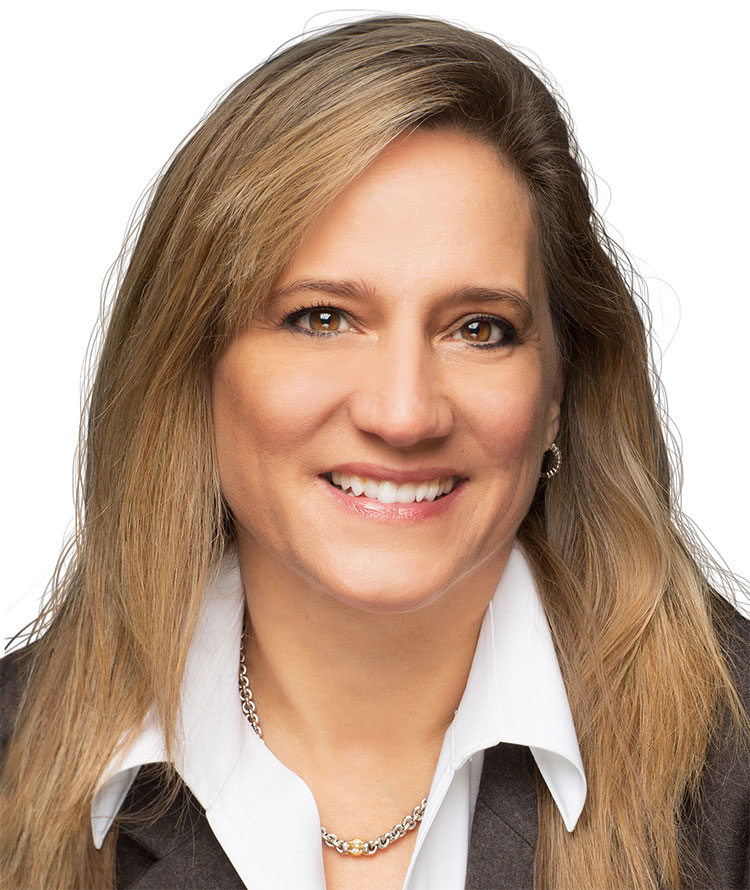
In 1997, she moved to SeaChange International, where she played a central role in bringing early on-demand technologies to market. “After the Full Service Network was shut down, I wanted to productize those technologies and bring a successful VOD product to market,” she said. That meant she had to not only prove the technology would work but show it had a viable business model. “The concept of replacing a Blockbuster home-video store with on-demand video was just inconceivable.”
Between 2012 and 2014, Kanouff held the top tech job at Cablevision Systems, where she pioneered such new technologies as the deployment of the first cloud-based DVR. She then joined Cisco Systems, heading up their video unit in 2014 and eventually taking charge of their entire service provider business, overseeing 6,000 employees.
In 2019, she joined the venture capital world in her current role at JC2, which was founded by her former boss at Cisco, John Chambers.
Over the years, her technical skills have earned Kanouff a host of major awards, including the NCTA Vanguard Award for Engineering and Technology and a 2020 Lifetime Achievement Award in Technology and Engineering from the National Academy of Television Arts & Sciences.
In the venture world, Kanouff is working with about 20 startups at JC2. They operate in a number of areas that could be important for the future of the pay TV, telco, television and entertainment sectors in such areas as artificial intelligence (AI), machine learning, automation and cybersecurity. She also remains active in a number of industry organizations, including the Society of Cable Telecommunications Engineers/International Society of Broadband Engineers, where she is vice chairman of the SCTE Foundation. She has also been a longtime advocate of diversity in the tech sector.
“When I joined the industry, I was very commonly the only woman in the room,” Kanouff said. “I was very lucky to have so many wonderful mentors who were sponsors of my career. So I’ve been very active in trying to help both minorities and women, and it is nice to see that this is an issue that is coming front and center.”
Jaya Kolhatkar, Executive VP of Data, Walt Disney Direct-to-Consumer & International
The rise of streaming video and direct-to-consumer streaming services has made data analytics a particularly hot topic, as major players like The Walt Disney Co. launch streaming services around the world.
The industry’s pivot to DTC also highlights the growing importance of innovative work by experts in data analytics like Jaya Kolhatkar, the head of data analytics at Disney’s DTC operations. Her innovative work in data technologies at Hulu helped boost subscriber numbers to 39.4 million in the first quarter of 2021, up from 17 million in 2017, and created insights into consumer habits that helped Hulu’s sales team develop new ad products.
Kolhatkar said she became fascinated with data and statistics while in college, which led to an MBA from Villanova University in 1987. But she really saw the power of data analytics after graduation, when she took a job with an insurance agency that did a lot of direct marketing.

“A lot of the marketing research I’d done before was less directly related to the day-to-day success of a company, but here I was using data analytics to make direct marketing more efficient and less costly,” she recalled. “It was a great introduction how important leveraging data can be to a company and showed that if done well it can really be a competitive advantage.”
From there, she had a series of jobs in data analytics in financial services before working as director of fraud and payments at Amazon between 1999 and 2003. There, she worked on the launch of the very successful Amazon Visa card.
As her career progressed, Kolhatkar also became more involved in not just data analytics, but the technology infrastructure for handling that data. Between 2007 and 2011, for example, she worked with a team of engineers at eBay to develop better ways to leverage the data from their three main businesses.
Using that experience, she and some friends at eBay launched a startup in 2011 that developed a tech platform for data analytics. It was acquired in 2013 by Walmart, where she worked until 2018, when she joined Hulu.
Hulu had long been doing innovative work in data analytics but Kolhatkar was the first executive to oversee all those efforts. One of her early tasks was to harmonize the data and use it to help boost revenue, which led to a number of successful new products and efforts.
In addition to using data analytics to refine new user interfaces, those insights were also applied to the development of new ad products. For example, Hulu’s sales teams capitalized on the popularity of binge viewing by developing ad strategies for it. After a viewer had watched a certain number of episodes, they would see an announcement that a single advertiser was sponsoring the episode, which would otherwise be ad-free.
“We also found that people were pausing a lot,” Kolhatkar explained. Based on that insight, the sales team sold ad images that would appear on the screen when the video was paused.
Last summer, Kolhatkar was promoted to her current role, heading up data teams for Disney’s direct-to-consumer services like Disney Plus, Hulu and ESPN Plus so that the company can leverage data insights across all the services.
“We are not only looking at brand new trends from all three services but also figuring out what we can learn from the different data infrastructures,” she said.
Stephanie Mitchko-Beale, Executive VP & Chief Technology Officer, Charter Communications
AS the top technologist at Charter Communications, Stephanie Mitchko-Beale has long been an innovator, having worked on early deployments of broadband networks, advanced advertising, cloud-based DVRs and interactive television.
During her 15-year stint at Cablevision Systems, she won an Emmy Award for Best Interactive Television Platform as well as two Technical Emmys. Since joining Charter in 2019, she’s been overseeing tech teams building faster, more reliable networks as part of cable’s 10G initiative that will ultimately produce broadband speeds of 10GB.
This year, Mitchko-Beale isn’t just being honored for a long history of tech innovation. She is receiving B+C’s first award for Technology Leadership in Building Diverse Tech Teams for promoting diversity in the industry.
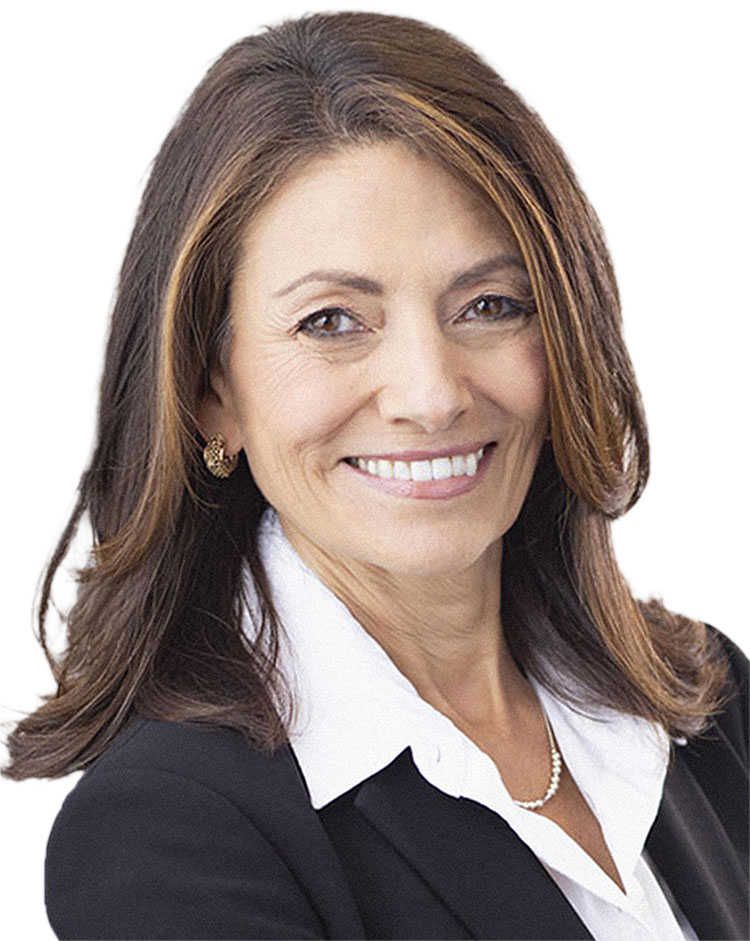
Mitchko-Beale’s father was an engineer, and she grew up in a family where her love of math and science was encouraged as she learned to take apart radios and TVs. “I got my father’s voracious curiosity in learning how things work,” she recalled.
Studying for her engineering degree at New York University’s Polytechnic School of Engineering in 1987, she was one of the few women in the program. Even today, Mitchko-Beale is the rare woman serving as top technologist at a large corporation like Charter, which had $48.1 billion in revenue in 2020.
While Mitchko-Beale is unusual in a top tech position, she stressed that “the diversity and inclusion conversation isn’t just about women. Having men and women of all different backgrounds, different sexes and different ethnicities being brought together for problem solving and innovation is extremely valuable.”
She also highlighted the importance of inclusion: “You not only need different people in your organization, they have to be included and brought to the table if you want to see the benefits of that diversity.” A variety of research studies have found that companies with more diverse employees perform better as businesses.
Such efforts are particularly important in a period of rapid technological change. “If you have a group of people who adapt and respond in the same way to issues, you don’t get the benefit of having a wider discussion,” she said. “But when you bring diversity into the picture and include people, you have this flow of ideas that helps you respond better and faster to change.”
In addition to mentoring and working with industry organizations, Mitchko-Beale stressed that simply talking about the subject is important.
“I talk about it to my staff in staff meetings,” she said. “Are you looking at diverse slates when you are hiring people? Are you making sure we are thinking about minority-owned business? Are you creating an inclusive environment?”
She also stressed that the industry needs to encourage younger people to get involved with science, technology, engineering and math at an early age.
Likewise, the industry needs to highlight the very interesting, innovative work that companies like Charter are doing, she said.
“When most people think about technology they think about the tech giants, Google, Twitter, Amazon, doing cool tech things and that cable is just old cable,” Mitchko-Beale said. “In fact we are doing very interesting innovative work in things like data science, artificial intelligence, streaming media, next-generation broadband networks, mobile phone technologies and app development.”
Barbara Lange, Executive Director, Society of Motion Picture & Television Engineers (SMPTE)
In recent years, rapid technological change has highlighted the importance of standards in the rollout and deployment of new services and businesses. Streaming services, for example, would struggle to efficiently deliver content if there were no standardized formats for digital files and compression.
That imperative has done more than make the work of venerable industry organizations like SMPTE and its executive director, Barbara Lange, more important than ever. It has also required significant changes in the operations of SMPTE, which was founded in 1906 in the early years of the theatrical film industry.
“As the industry changes and the technology changes, we’ve also had to adapt,” said Lange, who is receiving a Technology Leadership Award for her work in helping SMPTE support the industry with new standards, training and information so companies can navigate a rapidly changing business and technology landscape.
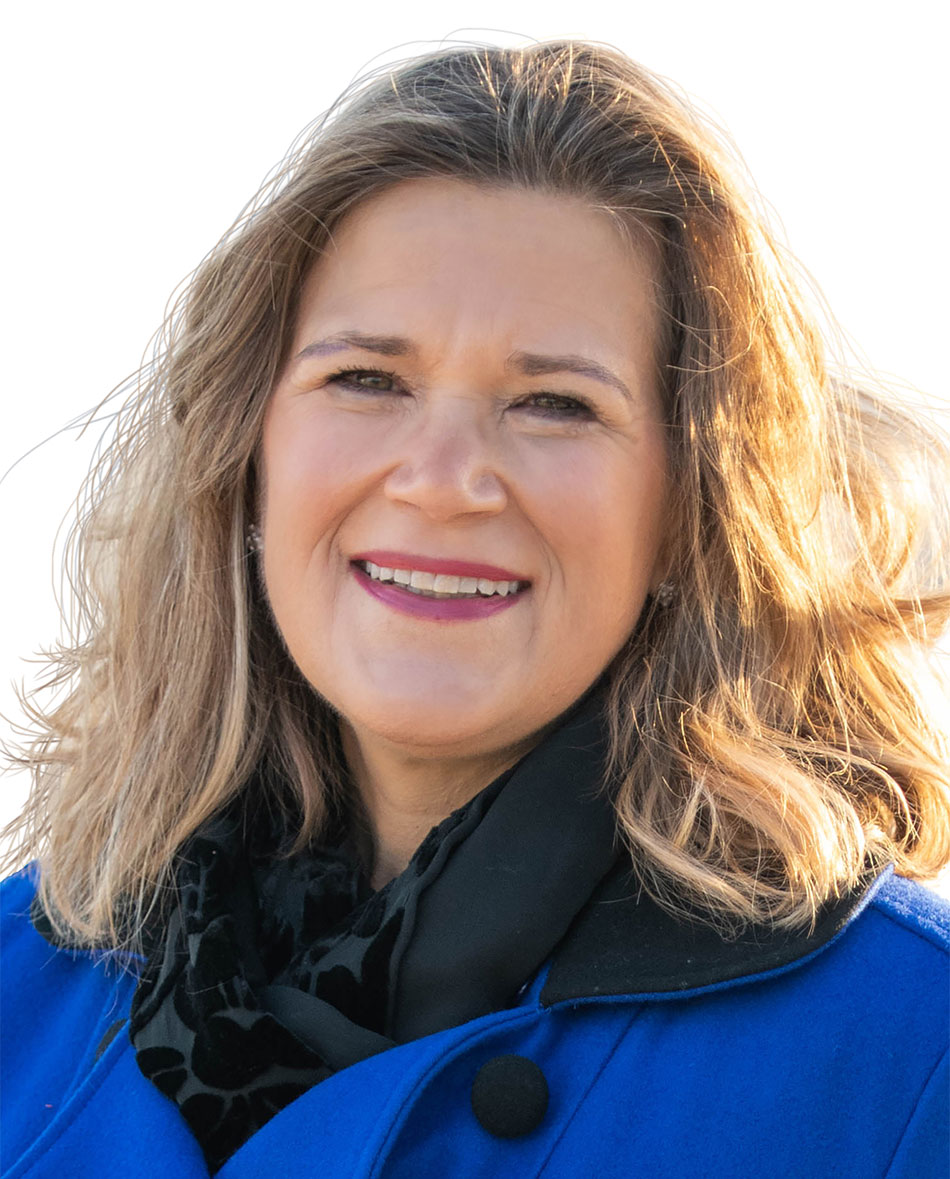
Lange arrived at SMPTE in 2011 with a resume that included work in scholarly publishing and at the Institute of Electrical and Electronics Engineers (IEEE), the world’s largest technical professional organization. “When I arrived at SMPTE many of the standards were around hardware and cables coming into the hardware,” she recalled. “But that has quickly transitioned to a world-based software so that most of our standards are now software-oriented.”
In the last decade, SMPTE’s members and the volunteers serving on its standards committees have produced over 200 new tech standards, including on work crucial to the industry’s pivot towards streaming and digital media in such aspects as the Interoperable Master Format (IMF), High Dynamic Range (HDR) and video-over-IP.
“We wouldn’t be where we are in not for the fantastic work of our staff, our dedicated board members and our volunteers,” said Lange, who has also spearheaded a number of operational changes to help those volunteers create new standards.
In the last decade, for example, SMPTE made much more information available to members on its website; it began offering virtual education in 2013; it has adopted a host of new digital technologies for collaboration on standards work and in 2020 it provided educational services to over 10,000 people.
Prior to the pandemic, that also helped boost membership by 30%. In the last year, those digital platforms expanded SMPTE’s international reach, with the number of countries represented at the SMPTE 2020 virtual event growing 133% over 2019.
Looking forward, SMPTE will continue putting more focus on the newer technologies the industry is embracing, Lange said. “The most important thing right now is media in the cloud and how we can enable interoperability,” she said.
“This is a 105-year-old organization and the work we do is critically important to the industry,” she noted. “We want to continue to be the unbiased platform where the industry can come and debate the technologies it needs.”
Doug Lung, VP Broadcast Technology, NBC/Telemundo Stations
Doug Lung is the rare technologist who has not only made a significant impact on the TV industry, helping build the technical infrastructure of the Telemundo station group. He is also an influential tech writer whose columns have educated two generations of engineers on a host of new technologies in the pages of TV Tech and other publications.
Lung’s passion for finding innovative ways to use broadcasting technologies and his willingness to help others advance those technologies, began early.
“I must have RF [radio frequency] technologies in my blood,” Lung quipped, noting that he began building radios in the late 1950s, got his ham radio license at the age of 12 and was teaching a class on amateur radio in the late 1960s while still in high school. One of his students, a chief engineer at a local radio station, was so impressed, he hired him to for an evening shift at the radio station.
After working in the 1970s and early ’80s in radio, local cable TV, a global production center and eventually at TV station KSCI Los Angeles, Lung made an indelible mark on the broadcasting business by expanding the reach of Spanish-language television.
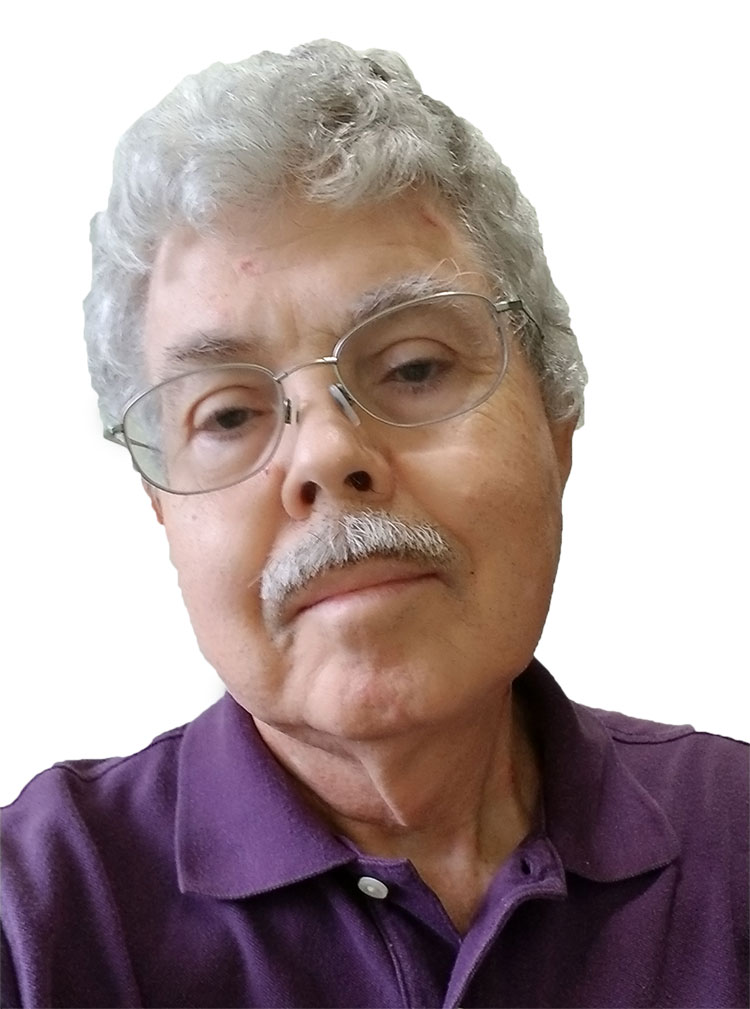
In 1985, Lung joined a group of four colleagues that bought KSCI and successfully relaunched it as L.A.’s second Spanish-language station. Fueled by that success, the group then acquired and built a number of other stations that would become the Telemundo station group. Lung headed up the tech and engineering operations at these Telemundo stations until the Spanish-language broadcaster was acquired by NBC in 2002.
In addition to his important work advancing the success of Spanish-language broadcasting in the U.S. via his work at the Telemundo stations, Lung has also been one of the most influential writers about broadcast technology. In recent decades, he’s written nearly 300 columns for TV Tech, B+C’s sister publication, and has been a contributor to journals put out by organizations like the IEEE Broadcast Technology Society, where he has focused on open-source software and innovative hardware.
“Writing the column for TV Tech has been a great opportunity because it forced me to learn about new technologies and provided me with invaluable feedback,” he said.
Lung noted that NBCUniversal has been very supportive of that work, allowing him to discuss new technologies as long as he stresses that his comments are his own views and not those of the company.
Lung stayed on after the acquisition of Telemundo by NBC and is currently responsible for RF and transmission technologies at NBCUniversal’s owned stations.
Other career highlights include leading the DTV transition at the station group, compiling tech information for his transmitter.com website and working with a team of engineers to get New York’s TV stations back on the air after the Sept. 11, 2001, attacks.
Phil McKinney, President and CEO, CableLabs
Over the last year, the pandemic highlighted the importance of the CableLabs research into creating fast, reliable internet connections for home schooling and remote work, with a host of newer technologies on the horizon that could have an even bigger impact over the next decade.
CableLabs president and CEO Phil McKinney came to the organization with a well-established reputation for discussing innovation on his podcast and radio show and in his books and for a long career in technology dating back to the early 1980s. His resume includes the launch of more than a dozen tech start-ups and senior tech roles at Teligent, Computer Sciences Corp. and Hewlett Packard.
As VP and chief technology officer of Hewlett Packard’s Personal Systems Group until 2011, McKinney oversaw an operation with $40 billion in annual revenue; set up HP’s successful and widely copied Innovation Program Office to incubate and launch new products and services; and built tech teams that were listed as among the 50 most innovative by Fast Company and Bloomberg Businessweek in three different years. He also launched the Hacking Autism Foundation that he still runs.

This background in software, IT, tech startups and Silicon Valley convinced the cable industry to hire him to head CableLabs, the industry’s tech consortium, in 2012. At that time, cable faced increased competition from tech giants such as Google, Facebook and Amazon, and MSOs were responding by placing more emphasis on IP networks, streaming, software and other widely used Silicon Valley technologies.
“One notable part of that pivot we’ve made at CableLabs,” McKinney said, “has been to take a longer-range view, not focusing on technologies that are one to three years from coming to market but to focus on three to eight years. We wanted to take a longer view and make bigger bets around longer, larger products.”
That has gotten CableLabs involved in a number of cutting-edge technologies, including much-faster and more reliable broadband services, artificial intelligence, new holographic lightroom imaging displays and the convergence of wireless and wired networks that will help operators deliver content and new services more seamlessly into the home.
Such efforts could have a major impact on the overall tech landscape in the 2020s and beyond. The development of high-speed internet technologies over cable via the DOCSIS standard at CableLabs in the 1990s and 2000s helped touch off a wave of tech innovation in the early 21st century, McKinney said, as Google, Facebook, Amazon, Netflix and others built new digital services on top of the high-speed internet platform being deployed by the cable industry.
Today, McKinney believes cable’s 10G initiative, which would enable speeds of 10 gigabits per second, will have a similar impact. “As we develop 10G, you are going to see some very interesting technologies built on top of 5GB and 10GB networks,” he said. “We are investing and working on creating an amazing platform for others to innovate on top of.”
Phil Wiser, Executive VP/Chief Technology Officer ViacomCBS
A prime example of how executives from the streaming and digital worlds are helping major media companies build new streaming and direct-to-consumer businesses can be found in ViacomCBS’s top technologist, Phil Wiser.
Early in his career, Wiser was the co-founder and chief technology officer of Liquid Audio, which developed underlying technologies for online music. In 2001, he moved to Sony Music, where he formed the Digital Business Group as the chief digital and technology officer, and convinced the company to ink a landmark deal with iTunes that would revolutionize the music business.
“At Liquid Audio, we had to create the fundamental technologies to package and distribute media over the Internet,” he recalled. “Then at Sony I had a great opportunity to help them reinvent their business around digital at a time when we were starting a massive disruption of the music industry.”
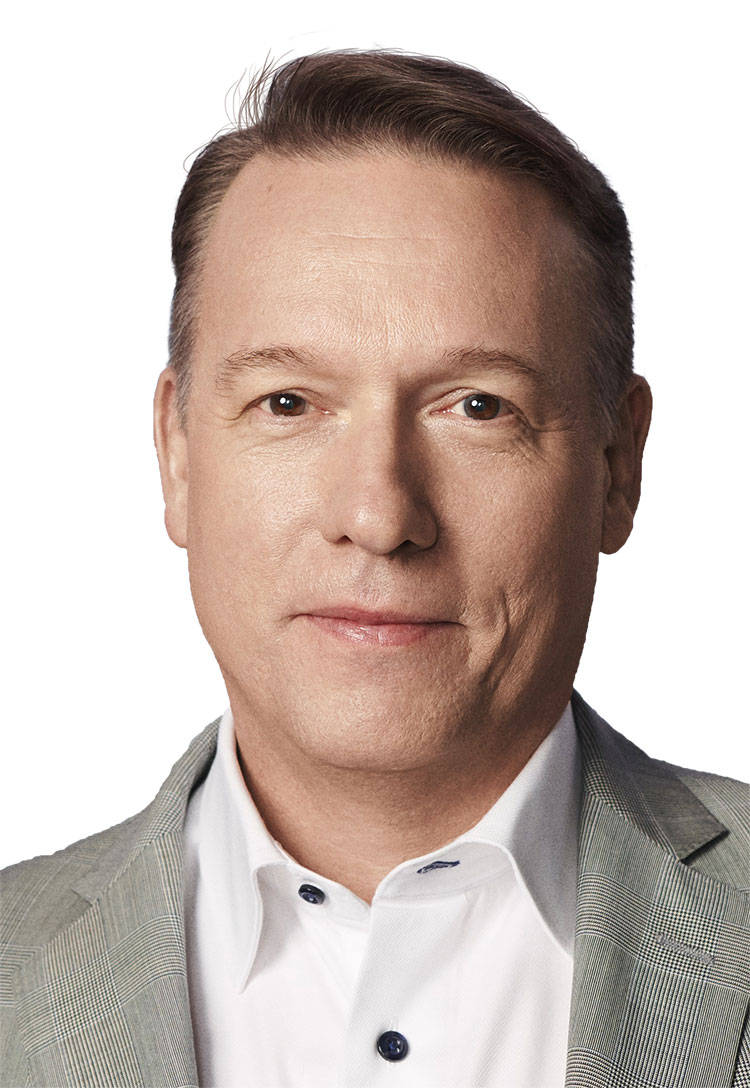
After leaving Sony in 2006, Wiser co-founded the pioneering video streaming service Sezmi that offered the first internet cable bundle of channels and broadcast stations, an effort that also required new technologies. “We generated over 1,000 patents that really foreshadowed what is happening in the market today,” he said.
After a stint as the first CTO at Hearst between 2012 and 2018, Wiser then took the top tech job at CBS, assuming his current role when Viacom and CBS merged.
As ViacomCBS works to accelerate what were already very extensive streaming efforts with the launch of Paramount Plus this month, Wiser said: “We are working to transform our entire media operating model. That is a real disruption of everything from the way we produce our content to the way we process and distribute the content.”
A central part of that effort is a shift to cloud-based technologies that will enable the use of newer automation systems, machine learning and artificial intelligence to improve operations, Wiser said.
In December of 2020, ViacomCBS said it would work with Amazon Web Services to move operations for its entire broadcast footprint, which spans 425 linear television channels and 40 global data and media centers, to the cloud.
Looking forward, Wiser said, the creation of a new technical infrastructure will provide ViacomCBS with much greater flexibility to quickly launch new services and expand internationally, which is crucial for streaming media business models. “Paramount Plus was available in 20 markets at launch internationally,” he said.
Wiser also believes the new infrastructure will help deliver higher-quality content, such as high dynamic range (HDR) video, and give artists new outlets for their creativity.
“Throughout my career I’ve always been focused on artists,” he said. “So I’m particularly proud that [these tech efforts] are giving writers and creators new opportunities” to create high-quality productions that can be delivered to consumers in new ways.
